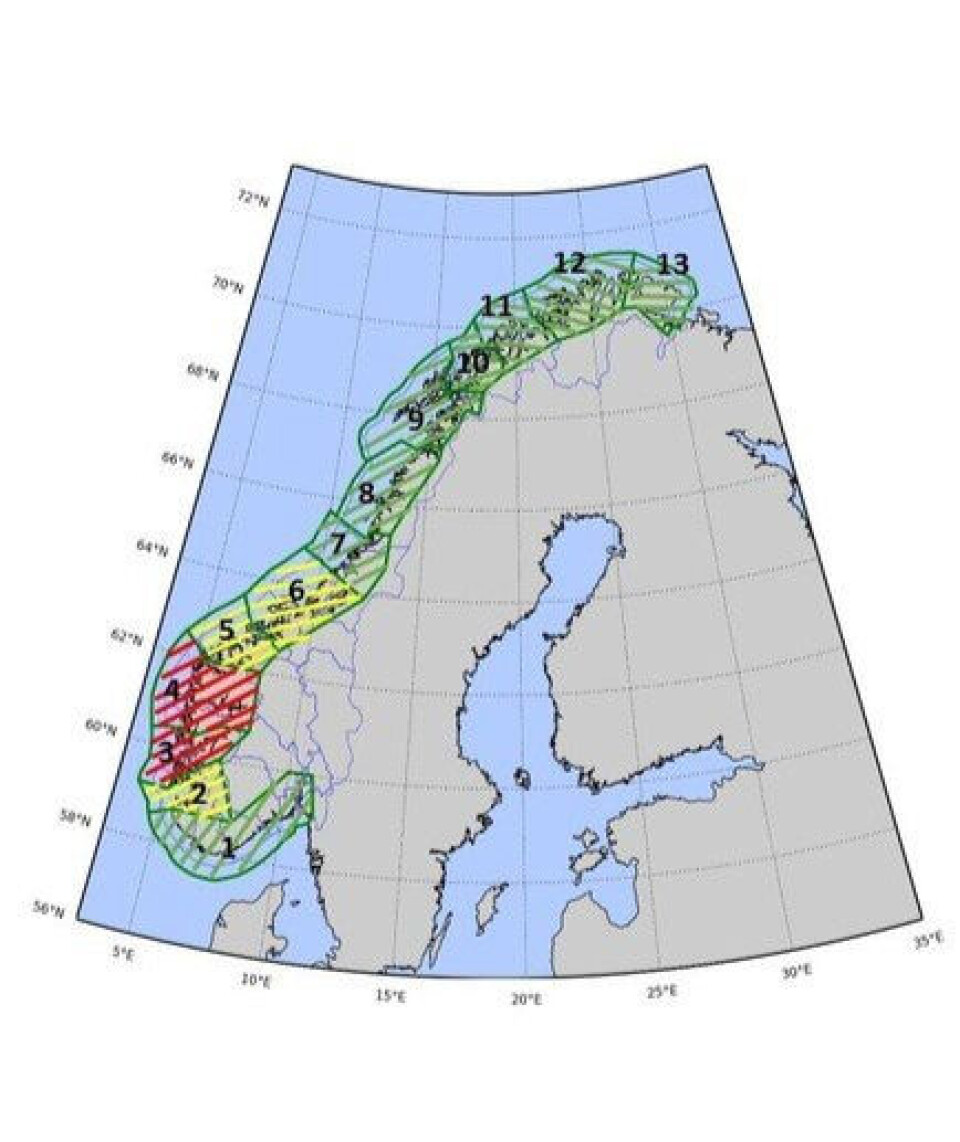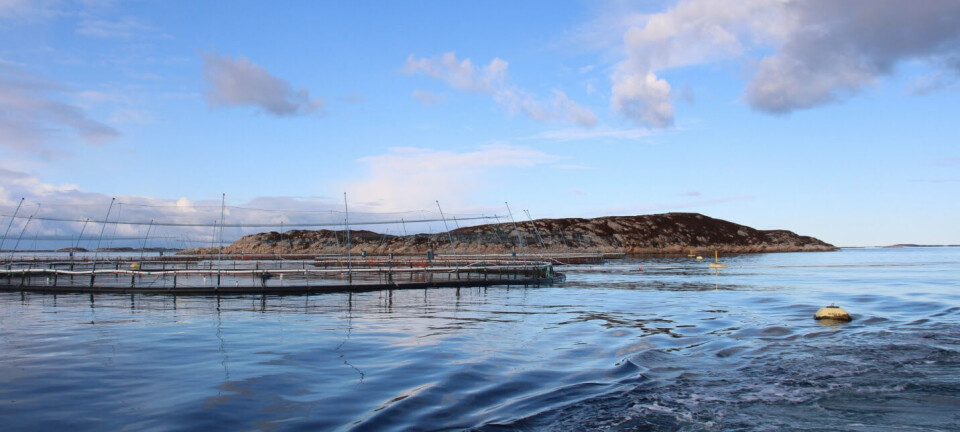
Mowi among fish farmers suing Norway over production cuts
All 25 salmon and trout farmers in one of Norway’s 13 fish farming areas are following up on a threat to sue the state after they were ordered to cut production through the “traffic light” system. They include Mowi, which has 19 farms in the affected area, and Scottish Sea Farms co-owner Lerøy, which has 10.
The system was introduced in 2017 and is updated every two years. It divides the country’s coast into 13 defined areas, from area 1 in the south to area 13 in the far north. The areas are given a green, yellow and red traffic light designation depending on the perceived risk of sea lice-induced mortality among wild salmon. Capacity is adjusted by 6% upwards (green) or down (red). In yellow areas, capacity is frozen.
Earlier this year, Norway’s Ministry of Trade and Industry decided that production area 4, which extends from Nordhordland to Stad, should be coloured red, meaning that all companies in the area must reduce production by 6%.

‘Large gaps’ in basis
“When the state imposes a large-scale reduction in production and value creation in the area, we must be able to expect that the basis for the decision is solid and verifiable,” said Even Søfteland, spokesperson for the fish farmers, in a message to Fish Farming Expert’s Norwegian sister site, Kyst.no.
“Predictability and scientific grounding were a prerequisite when the traffic light system was introduced. However, we have uncovered large gaps in the professional basis on which the decision on reduction is based.”
The aquaculture companies announced on June 3 that they would take legal action against the state if the decision was upheld. Today they stated in a press release that they have, among other things, proposed solutions such as lowering production by as much as 12% in the spring.
Talks offer ignored
“In the ministry’s response, they showed a willingness to enter into dialogue to discuss solutions. We have, of course, followed up on this invitation, but unfortunately our attempts at dialogue have not been answered. We think this is very unfortunate, and we now see no other options than for the court to consider the case,” said Søfteland.
He emphasised that the fish farmers are not opposed to the traffic light system, and said that the disagreement is about the professional basis on which the reduction is based.
“Reducing the production of the country’s second most important export product by 6% will have major consequences for local communities, subcontractors, and the municipalities’ tax revenues,” said Søfteland.
“When such an intrusive measure against the industry is implemented, we must be able to expect that the professional and legal assessments behind it are sound. That is not the case in this case, and we are therefore now bringing the case to the court system.”























































